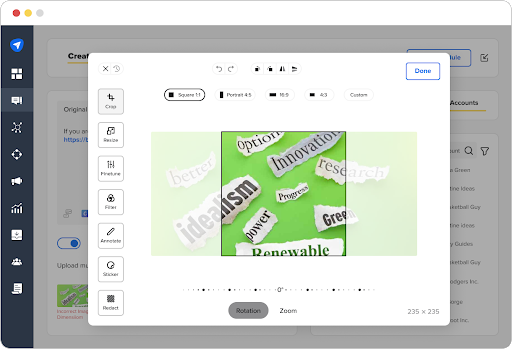When social media marketing first came about, brands were apprehensive about switching from traditional marketing.
However, years later, social media has proven time and time again that it is here to stay.
Social media is one of marketing’s greatest evolutions. But what does that mean for brands?
A lot of creative thinking, a solid social media strategy, and a lot of posting. Now, if you think this only increases your marketing team’s workload. We’re here to shut that thought down.
Yep, you read that right. We’re here to tell you about our savior: Cross-posting *cue a harmonious choir singing Hallelujah*.
Cross-posting is one of the smartest tricks that the best social media marketers use to keep their social media interesting, consistent, and up to date.
Read on to find out what cross-posting is and why you need to include it in your marketing plan.
What is Cross-Posting?
Cross-Posting is the practice of using the same content but utilizing it on various platforms with certain tweaks related to the platform.
For example, a blog post written on your website for SEO can be cross-posted as important one-liners that can be shared onto your Twitter platform, or it could have an image that goes up on your social media with the blog link in the bio.

Brands or businesses can crosspost on as many social platforms as they’d like. It widens up the opportunities for their social media presence.
How to Include Social Media Cross-Posting in Your Social Media Strategy?
So how does one go about including cross-posting into their social media plans? Well, this is where your social media strategy steps in.
So before we get to cross-posting and understand how to fit it into our social media plans, let’s figure out what a social media strategy is.
Interesting Read: Use this Social Media Strategy Template to Help You Save Time
A social media strategy outlines your business goals with your social media. It addresses the methods or practices you will use to reach these goals and the metrics needed to track your progress to reaching these goals.
A great social media plan identifies your SWOT (strengths, weaknesses, opportunities, and threats) offline and addresses these online. Once these are identified and an ideation plan is set in place, you evaluate where your audience is online and begin your content creation. Tracking better metrics and evaluating your outcome can be done effectively when you define your team’s roles and responsibilities.

Having all of this in place acts as a guideline for figuring out exactly how much content can be used for cross-posting. This gives your social media manager an outline for the outcome of the cross-posting strategy.
It’s helpful to understand your audience and then get started to come up with an effective content strategy. While all of this may seem a little overwhelming, we promise it isn’t as intimidating as it looks once you begin planning your social media.
The most straightforward way to do so is by working on your Pillar Content and then understanding what to cross-post on which platform.
Pillar content or Content Buckets are marketing terms to identify a topic or theme for your social media to create content.
These topics or themes can be specific to your audience’s engagement with online or a brand niche that reflects your business.
Having pillar content makes it easy to identify talking points within your audience. This also helps understand which pillars can go onto which platform on your social media based on objectives, tone of voice, etc.
Once you have set your pillar content and identified the content you need to create, all that is left is figuring out the frequency and time to post.
But this doesn’t mean you need to come up with a different strategy for different platforms. All you have to do is just introduce a cross-platform social media strategy into your social media plan.
But, before you do that, it helps to know how to cross-post effectively. We know what you’re thinking ‘It’s just repurposing content.’ How hard can that be? Well, in theory. It’s simple enough. But putting it into action incorrectly can make your brand look amateur and spammy.
This is why we put down a couple of platform restrictions to help you navigate this new territory.
What Are The Best Practices For Cross-Posting On Social Media?
While there are no hard and fast set rules for cross-posting on social media, there are restrictions related to each platform.
1. Don’t cross-post everything
Identify the tone of voice used on all social media platforms and align your content to fit this tone. Usually, Facebook cross-posting is the easiest platform to create content for since it is the most versatile allowing the least restrictions. But that shouldn’t mean cross-posting everything on all platforms.
2. Pay attention to character count and links
While LinkedIn and Facebook allow for long-form content along with videos or photographs, Twitter restricts your character limit to 280 characters, including links.
Instagram allows you to publish wordy descriptions, but it doesn’t allow for clickable links in the descriptions. One needs to navigate the audience to the link in the bio. Instagram’s 2024 update will enable brands also to use their stories to add links without a minimum follower count.
3. Choose the correct visuals
Each platform has a preferred image and video ratio.
While Instagram has scrollable carousel posts, Facebook pages upload multiple images as a group of photos. Instagram also gives you the option to use a mix of videos and photos on the same carousel, which is not supported on Facebook.
Understanding these restrictions can help you plan your cross-platform social media posting.
However, keeping up with the multiple platform-specific image size guidelines can be a challenging task. Marketers often get confused with numerous platform-specific image size guidelines and mistakenly share the wrong aspect ratio images.
So. when cross-posting, make sure you stay attentive towards sharing the right-sized image post.
Cross-posting is tough. Keeping up with different platform-specific image size guidelines is quite tricky. Use SocialPilot’s inbuilt image editor to fix your images with a predefined social media aspect ratio cropping tool on the go, and never post a wrong-sized image.
For Instagram, edit your image post in the square(1:1), portrait(4:5), and story(16:9) aspect ratio in just one click. Similarly, publish pixel-perfect images with the landscape (1.91:1) and vertical (2:3) predefined aspect ratios for other social media platforms.
Interesting Read: The Complete Social Media Image Sizes Cheat Sheet
4. Leverage automation for consistency
It gets difficult for brand managers and social media marketers to post something every couple of hours to the tee. That’s why it is more effective to leave the monotonous work to social media automation tools.
Is There An App For Cross-Posting On Social Media?
The activity of cross-posting can seem mundane and sometimes confusing because of either how monotonous it is or how confusing it can get with multiple platforms.
Once you have identified your main content for social media and have decided what needs to be published, you can pick days and times to cross-post on social media.
For efficient posting, it helps to use an app that can cross-post on social media for you, such as SocialPilot. It is a budget-friendly social media automation tool that enables you to do more than just Instagram and Facebook cross-posting.
SocialPilot can also be utilized for content creation, scheduling, analytics, and listening as well.
It’s AI Assistant feature helps you a great deal in generating captions for multiple social media platforms at a lightning speed. You get a range of templates specific to each platform and tone presets to ensure that even while cross posting your social media copies aligns seamlessly with the unique requirements of each social media platform.
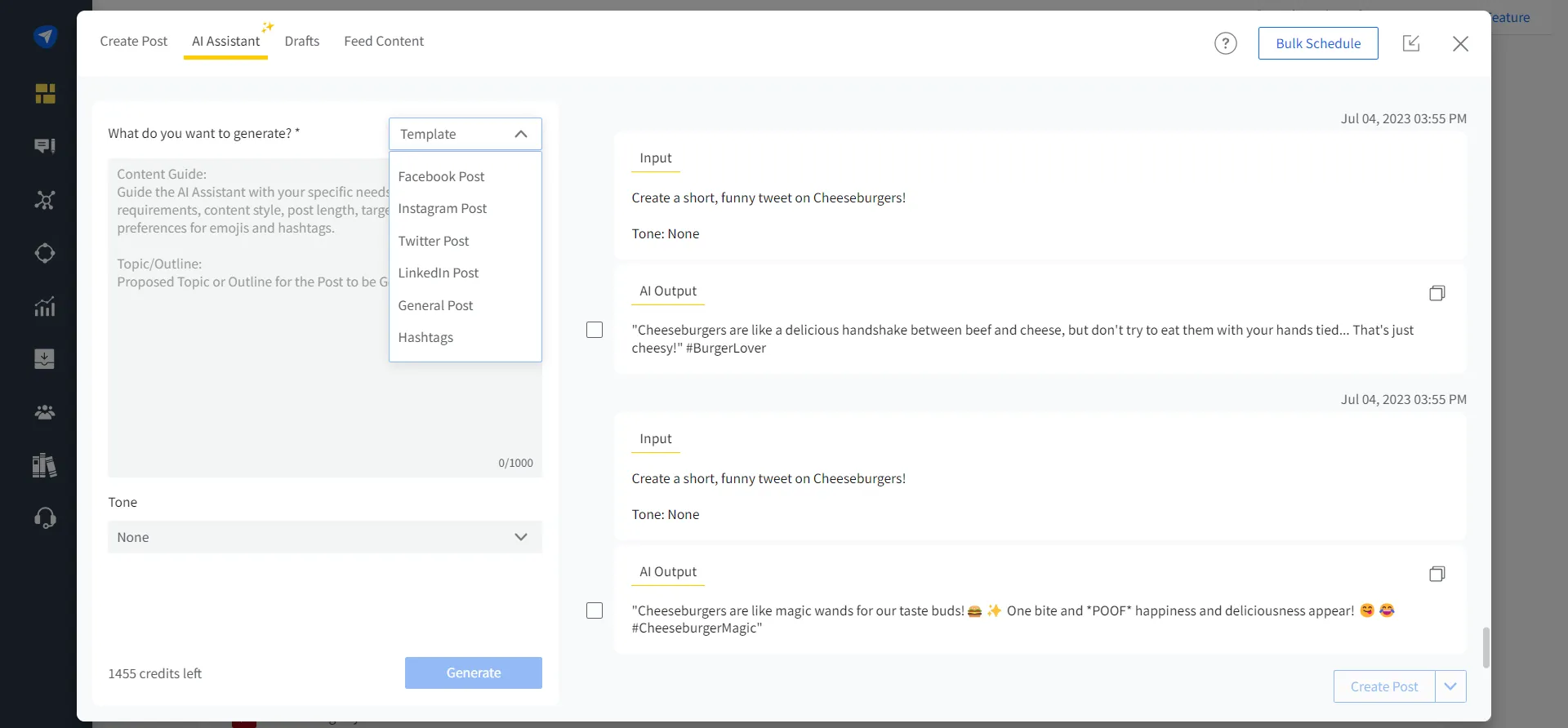
All of these features help understand what your audience is looking for on which platform and where is the best place for what content to be posted.
How To Cross-Post On Social Media Using SocialPilot?
Step 1: Write content you choose to go up on different social media platforms into the content box.
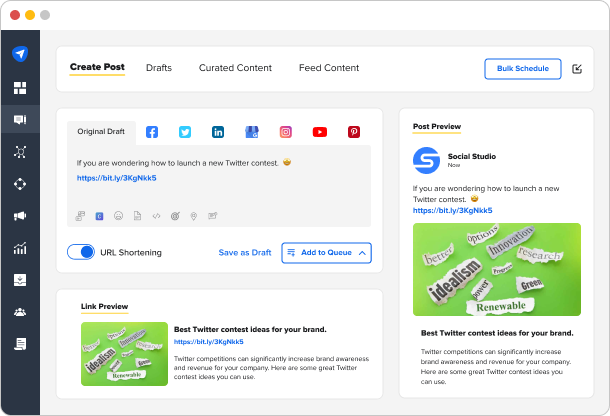
Step 2: You can customize your content slightly for a platform by switching from Original Draft to said platform tab.
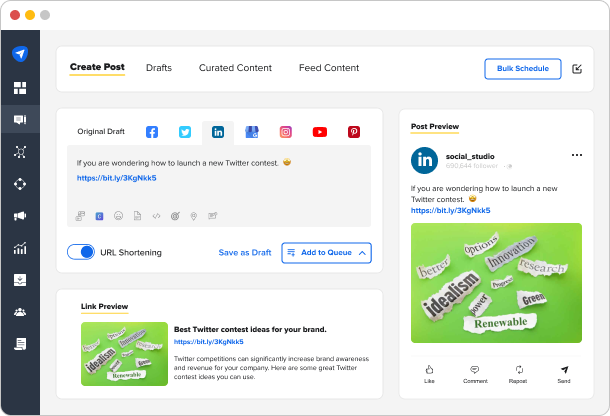
Step 3: Select an image, video, GIF, emoji, or even your own design from Canva to add to the post.
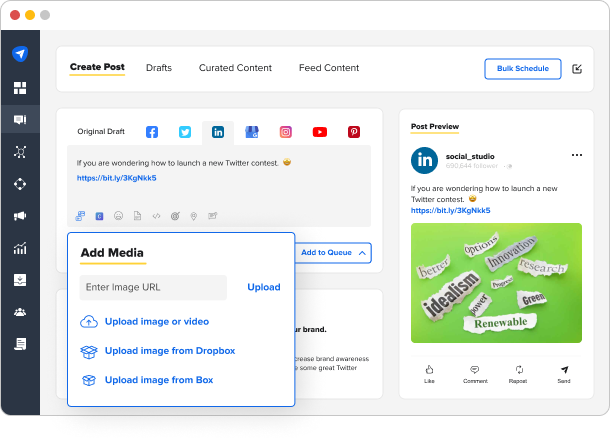
Step 4: Choose the accounts and platforms on which you’d like your content posted
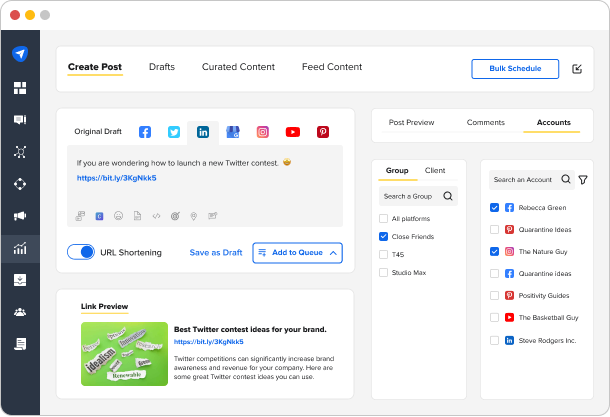
Step 5: Choose when you’d like your post to go up on your social media channels
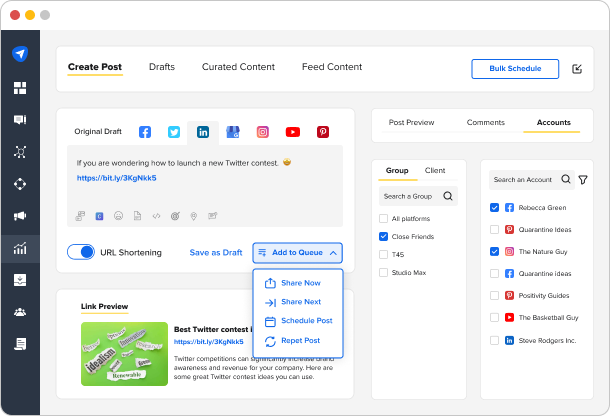
And, voila!
Using SocialPilot not only publishes the right things for your brand but also helps you keep your content live during times when your audience is online.
You can also use Facebook cross-posting since it can be easy for users if they are used to the native platform. The Meta Business Suite can be used as a social media cross-posting tool. It can be accessed from a desktop or phone via an app and can be effective for Instagram and Facebook cross-posting.
Pros And Cons Of Cross-Platform Social Media Posting.
While Cross-posting has an upside to it, it also comes with its downsides.
To understand that, one must understand the key to platform-specific social media content.
The key to social media today is that it helps have a uniform voice across all social media platforms while still embracing the platform’s expectancy.
A platform like LinkedIn may have a more business crowd, and Instagram may have a younger generation. It helps to have consistency in your brand’s communication so people can identify your brand based on your content, no matter which platform you are on.
Once you consider this, you can effectively define the pros and cons of cross-platform social media posting.
Pros of cross-platform social media posting
- It saves time for brands by not creating different social media plans for every platform.
- If cross-posting on social media is done incorrectly, it could come off as irrelevant to your followers.
- It allows brands to focus on creating better content since they can use social media automation tools to execute the monotonous work.
Cons of cross-platform social media posting
- All posts cannot be used across all platforms. It could also seem like spam for followers who follow you on all platforms.
- If cross-posting on social media is done incorrectly, it could come off as irrelevant for your followers.
- One needs to pay attention to each platform’s restrictions such as image, character count, clickable links, etc.
So, Is Cross-Posting Good?
Cross-posting takes away the pressure of creating original content for every single platform. All it really requires is for you to understand the best way your content can be represented to different audiences on different platforms.
Consolidating your overall content plan and placing it wisely gives your content more exposure, hence, reaching a wider audience. This enables your brand to become more popular with different segments of people.
It also allows for you and your team to spend all this time focusing on creating more valuable ideas and campaigns.

